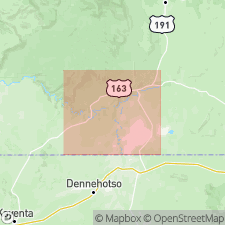- Usage in publication:
-
- McKim limestone member
- Modifications:
-
- Original reference
- Dominant lithology:
-
- Limestone
- AAPG geologic province:
-
- Paradox basin
Wengerd, S.A., 1950, Photogeologic characteristics of Paleozoic rocks in the Monument upwarp, Utah: American Society of Photogrammetry, Photogrammetric Engineering, v. 16, no. 5, p. 770-781., December
Summary:
Pg. 775, 778. McKim limestone member of Rico formation. A limestone, 3 to 20 feet thick, at top of the Rico. Lies just below base of Halgaito member of Cutler. Carries marine fossils. [Age is Permian.]
Forms top of Rico formation on west side of Raplee Ridge and in area of Mexican Hat, San Juan Co., southeastern UT. Name credited to Dunn and Boreing (personal commun.).
Source: Publication; US geologic names lexicon (USGS Bull. 1350, p. 453).

- Usage in publication:
-
- McKim limestone (informal, unranked)
- McKim limestone member[†]
- Modifications:
-
- [Abandoned]
- AAPG geologic province:
-
- Paradox basin
Summary:
24-25. McKim limestone (informal, unranked) in Rico formation. A local name applied to a persistent limestone 3 to 20 feet thick near top of Rico formation. Lies 130 to 136 feet below the ledge-forming A limestone (informal, unranked) at top of Rico, and 24 to 36 feet above the ledge-forming Baby oil sand (informal, unranked). Age is considered Permian.
Source: Publication; US geologic names lexicon (USGS Bull. 1350, p. 453).
For more information, please contact Nancy Stamm, Geologic Names Committee Secretary.
Asterisk (*) indicates published by U.S. Geological Survey authors.
"No current usage" (†) implies that a name has been abandoned or has fallen into disuse. Former usage and, if known, replacement name given in parentheses ( ).
Slash (/) indicates name conflicts with nomenclatural guidelines (CSN, 1933; ACSN, 1961, 1970; NACSN, 1983, 2005, 2021). May be explained within brackets ([ ]).

